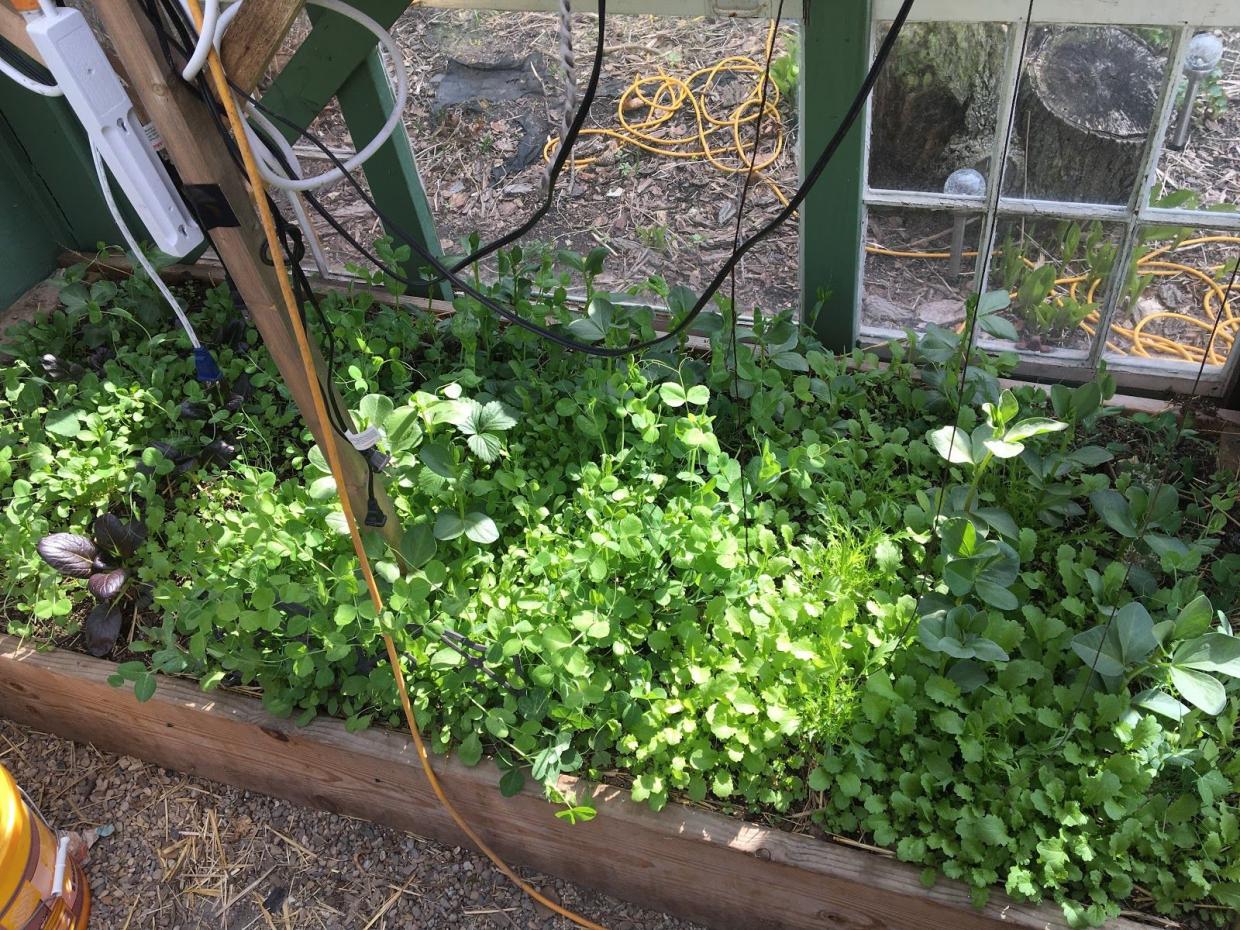Grow-A-Row: Getting started with Dan Price from Kalikalé

Looking to start or spruce up your backyard veggie garden? Beyond Hunger gladly accepts fresh-from-the-garden produce from local gardeners and community gardens. This year consider contributing to our Grow-A-Row program.
Oak Parker, Dan Price, an urban farmer who helps set up edible gardens through his business Kalikalé, has some tips on how to get started now with seeds, cold-hardy crops, and planting seedlings indoors.
 It’s a good practice to save some seeds each year so you don’t have to repurchase varieties you like to grow. Don’t worry if you haven’t started saving seeds.
It’s a good practice to save some seeds each year so you don’t have to repurchase varieties you like to grow. Don’t worry if you haven’t started saving seeds.
You can start this season and build up your collection over time. Placing your seeds in jars in a cool, dark place for the winter usually does the trick. Another way to “save” seeds is to purposefully let your garden “go wild”. By this I mean, allow your favorite vegetables to reseed themselves as “volunteers”. To do this, simply allow some of your veggie crop to go through its entire life cycle, unharvested and drop to the ground or overwinter. Sounds simple right? That’s because it is! Some crops I allow to reseed are Brassicas (mustard, collards, kale, radish, cabbage, broccoli, cauliflower), root vegetables like carrots and parsley, onions, and herbs. This practice is very Zen-like and ensures a very early Spring crop of veggies! Your garden will literally become your seed bank!
If purchasing seed (which I do each year), make sure to consult with a local gardening buff to see what varieties do well in your area. Take advantage of all of your garden’s micro climates. You can pick up seeds at grocery stores and hardware stores this time of year. There are also companies that deliver seeds to your house. I recommend Bakers Creek, Seeds Savers Exchange, or Eden Brothers. Sugarbeet has a great seed rack for you to peruse! If you want a head start on Spring veggies, you need to start some of your seeds inside. I usually start seeds indoors starting in the late winter, in succession. That way I have plants at different stages come springtime.
For an early Spring garden, these are the crops I recommend seeding in March & April to be planted outside in April & May:
1) Brassicas: mustard, collards, kale, radish, cabbage, broccoli, cauliflower, arugula & mizuna
2) Lettuce
3) Peas
4) Onions
5) Parsley
6) Fava bean
7) Spinach
*Root vegetables carrots should be started directly in the ground outside.
All of these crops are “cold-hardy” which means they can withstand temps below freezing. In fact, these crops are tastier and more nutritious with a few frosts in the early spring.
“What do I need to get started?” Answer: not much! Seeds, containers, and soil. I recommend a fluffy soil medium (I mix my own: one part peat moss, one part compost, one part vermiculite, and some rock dust for trace minerals).
Any containers will do. I’ve used just about everything over the years including the pockets of old blue jeans.


Fill up your containers with your soil mixture and press a few seeds about a fingernail’s depth into the soil. Cover the hole and pat down lightly. Water your container until the soil is moist and keep them in a warm room, preferably near a sunny window.

You may have to water the container multiple times before the seedlings emerge. Once your seedlings emerge, be sure to keep them in a sunny location near a window so the plants can begin photosynthesis. On warmer days (50s and 60s), let your seedlings outdoors to enjoy the sunshine and fresh air! You’re on your way!
Note on root vegetables: If you bought root vegetable seeds (carrots, beets, turnips), you can seed those directly in the ground now as well! Use a hoe or spade to loosen the soil in a sunny location in in your yard, add some compost or manure, rock dust for trace minerals if you like, and sow your seeds.
One last early spring garden tip: If you have a protected raised bed, all the better. I have a small greenhouse with a raised bed inside of it. This allows me to have a super-early Spring crop.
Seeds are where your garden begins. Buy and save your seeds, ask a friend or garden buff about varieties. Choose cold-hardy crops like Brassicas, Peas, and Lettuce for the early spring. Start them indoors to get a head start.
I offer free consults for families and businesses interested in starting or sprucing up an edible garden. Visit www.kalikale.com to see our full range of products and services. Stay safe, be well, and happy growing!
~Daniel